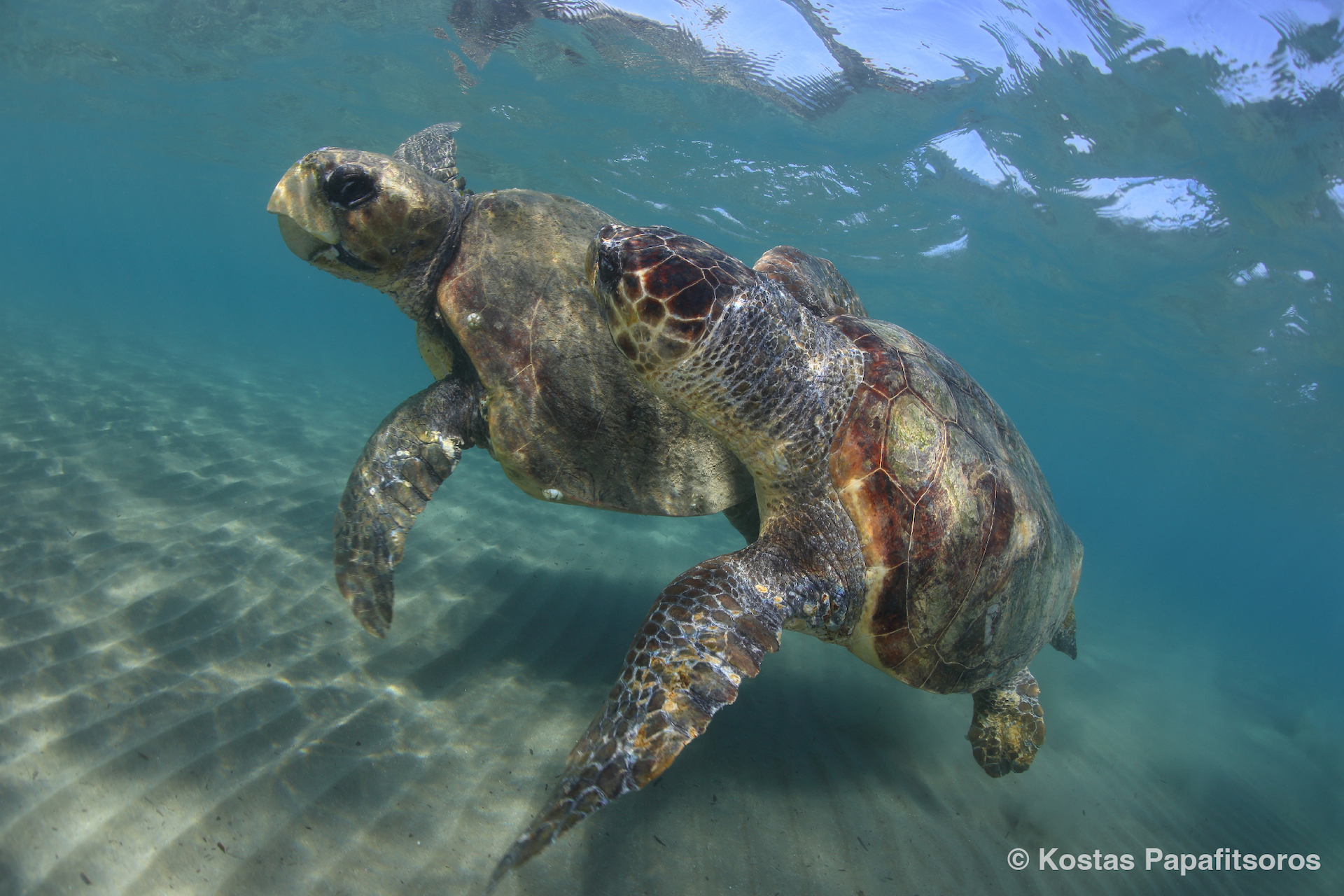In-water sea turtle behaviour
There is a great variety of sea turtle behaviours that one can see in Zakynthos, depending on the time of the year and the specific individuals (e.g. non-breeding residents vs breeding turtles):
Mating and courtship interactions





These occur during the mating season. Mating season starts around the beginning of March and ends at the beginning of June. It is known that female sea turtle mate with multiple males during the season and in fact Zakynthos has one of the highest incidence of multiple paternity in the world: More than 95% of the nests laid, are associated to more than one males!
Cleaning behaviour
These occur in several cleaning stations around the island. These are places (different spots from year to year) where typically adult female turtles are being cleaned by small fish. They also scratch themselves in the rocks possibly to find relief from the itchiness caused by several parasites. Cleaning fish can sometimes be annoying for loggerhead sea turtles especially when they bite the soft parts of their skin. In that case they make these funny avoiding movements that you rarely see in other circumstances.





Aggressive interactions for food resources





These typically occur between resident turtles and not between the female sea turtles that come to Zakynthos to breed. These fights involve bites and biting attempts and they can be very aggressive. They can often leave scars to sea turtles’ carapace and skin. These fights happen when turtles perceive some areas as high quality foraging spots leading to competition for these resources. These dynamics have often complex structure and can lead to the creation of hierarchies.
Foraging behaviour
Tis mostly observed in resident turtles which are mostly males and juveniles. Female turtles that visit Zakynthos to breed are rarely interested in foraging. Thus if you see a sea turtle foraging, most likely it is a resident male or juvenile. Sea turtles in Zakynthos can be observed eating molluscs that are buried in the sea floor, sponges, and bycatch discarded by fishermen. More rarely, they can be observed eating sea cucumbers, and sea urchins.





Resting





One can observe female sea turtles resting on the sandy sea floor during the nesting season. For nesting females, water temperature is be crucial for their levels of activity: turtles are more active during mating season/beginning of nesting season and their activity is decreased after end of June when water temperature has increased considerably. This has been confirmed with the use of accelerometers but it is also very easily noticeable by direct observations. Of course, male turtle and resident turtles like to rest too!